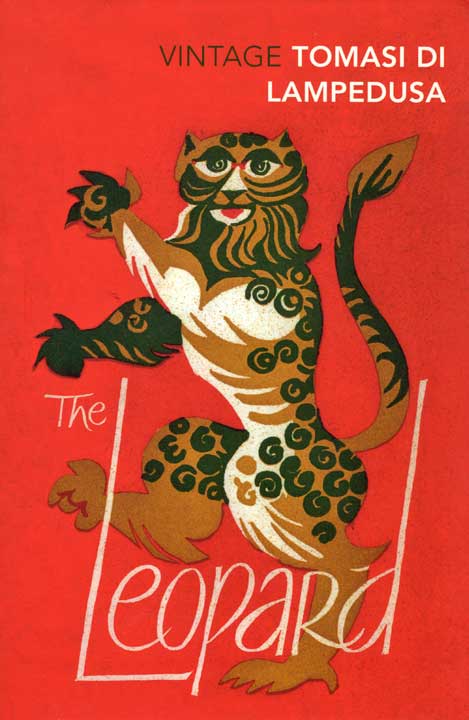A few years back, I heard of “The Leopard” (Il Gattopardo) for the first time in a literary magazine. It was hailed as one of the greatest novels of 20th century. Afterwards, I watched the eponymous film made by Luchino Visconti based on Lampedusa’s novel. But, it took me almost another year to lay my hands on the book. I finished reading the book only last week.

The book, largely based on one of Lampedusa’s own ancestors, chronicles the gradual downfall of the illustrious Salina family of Sicily. The story, spanning almost 50 years (1860-1910), revolves around the charismatic figure of Prince Fabrizio—the then head of the Salinas. It opens with the landing of Garibaldi’s troop in Sicily. The aristocrats, faithful to the Austrian Emperor, viewed this as a direct threat to their very existence and, hence, vehemently opposed the movement. But, a handful of them rightly foresaw that “if [they] want things to stay as they are, things will have to change”. They were certain that the present Empire is destined to be overthrown after the war (the Second Italian War of Independence/Franco-Austrian war/Austro-Sardinian War). Therefore, if the aristocrats wanted to live peacefully after the war, maintaining good relationship with the new rulers, they should take side with the Piedmontese (or the Franco-Sardinian Alliance). Tancredi Falconeri, Prince Fabrizio’s nephew, falls in the second group of aristocrats. Therefore, to secure his future position, he joins hands with the “Redshirts” and fights against the Austrian Empire. Prince Fabrizio’s clear analytical mindset helps him to understand the real scenario and, hence, he indulgently supports his nephew’s pragmatism. But, at the same time, he cannot accept it—his pride hurt, his family now at par with the rising upstart middle-class. So, throughout the novel he cuts out a tragically tormented figure suffering from a perpetual dilemma. In a famous dialogue, we hear him proclaiming—
“We were the Leopards, the Lions, those who'll take our place will be little jackals, hyenas; and the whole lot of us, Leopards, jackals, and sheep, we'll all go on thinking ourselves the salt of the earth.”
Though he confronts the changing time with stoic impassivity, deep down in his heart he is ravaged and doomed. Henceforth, the Salina family starts its journey downward, with their place quickly taken over by the new boorish petit-bourgeoisie, represented by the likes of Don Calogero Sedara.
The main beauty of the novel lies in the portrayal of the Prince. Lampedusa, with the delicate but firm hands of a sculptor, ekes out the character of the Prince with utmost care. Despite the tyranny and brutal patriarchal mentality of the Prince, one cannot but feel sorry for him. His Herculean effort to confront the changing time and subsequent failure reminds us of the heroes in Greek tragedies. The fall of Salinas (and many other families like them) is a kind of nemesis which has its root in their century-old lethargy to come out of their cocoon and look around them. Tancredi Falconeri provides a perfect counterpoint to the Prince. He is a sly mixture of pragmatism and sarcasm who tries to turn the recent socio-political upheavals to his own advantage, without any ideological commitment towards them. Tancredi's tempestuous affair with Angelica and his rejection of Concetta, daughter of Prince Fabrizio, both are partially calculated steps, taken to cope up with the changing social hierarchy. Tancredi may have his moral scruples, but he can hide them all too well when it comes to power and ambition. It is, probably, not a basic fault in Tancredi's otherwise jovial and agreeable demeanour, but a weapon for survival in those difficult times. This outright opportunism is what the Prince can appreciate but cannot practise due to his own feudal pride. Therefore this particular turning point in the Italian history marks the downfall of the Salinas and, simultaneously, the rise of the Falconeris. Don Calogero Sedara, father-in-law of Tancredi, represents another social class—the coarse petit-bourgeoisie climbing the social ladder as the game has now been reversed.
Another interesting feature of the novel is its temporal setting. Though the events in the novel take place in late 19th century, the author never lets his readers forget that the book is actually written in 20th century and is nothing but an attempt to recreate those bygone days. That is why, he often employs literary devices like flash forward as well as intentional anachronisms. For example, Lampedusa gives his readers a glimpse of certain events that are yet to occur (that is, they will occur sometime in future, beyond the timeframe of the novel), or he refers to the works of some authors who will emerge later, in 20th century. These tricks give a curious sensation to the readers. The vivid description of late 19th century Sicily draws the reader closer to the setting of the novel, but, on the other hand, flash forwards or anachronisms at once alienates them from it. So, the readers remain suspended at an uncertain region between subjective empathy and objective indifference.
Throughout the novel, Lampedusa painstakingly tries to maintain a balance—not to take any side at all. He describes the Prince’s brutal licentiousness and subtle sensibility with equal equanimity. But still, sometimes it seems that there is a sympathetic undercurrent for the unfortunate Prince. Here, the literary devices mentioned earlier, somewhat help him in this difficult act of striking a balance. Similar to their effect on the readers, these literary tools also help the author to estrange himself from the characters in the novel and, thereby, to maintain a reasonable indifference towards them.
HERE is an Wiki article on the novel and HERE is another one on Tomasi di Lampedusa.








